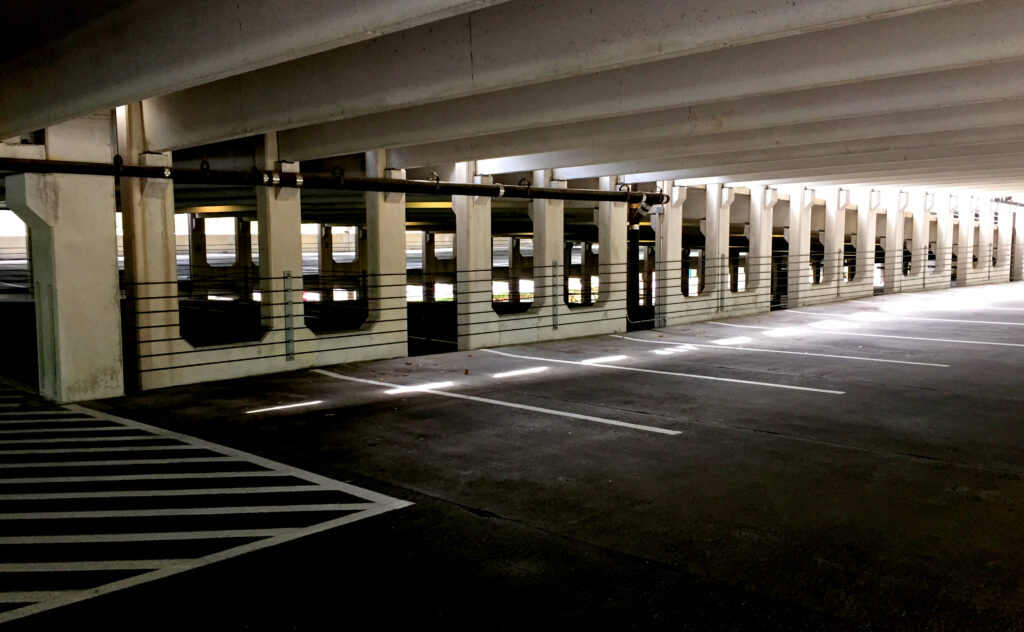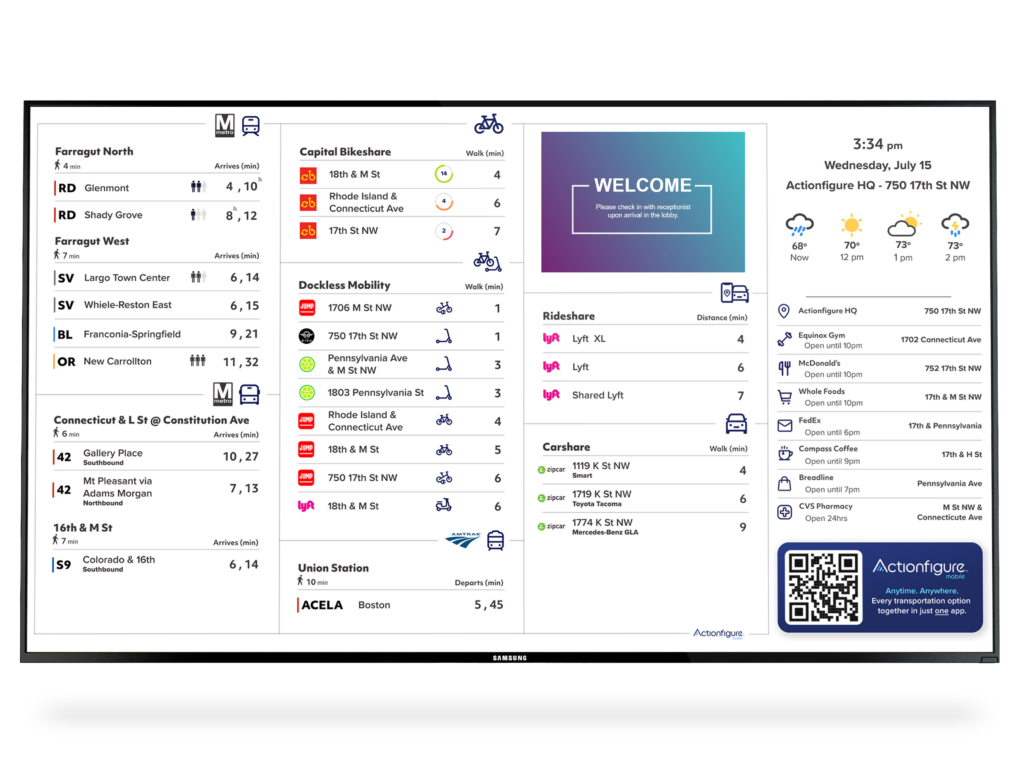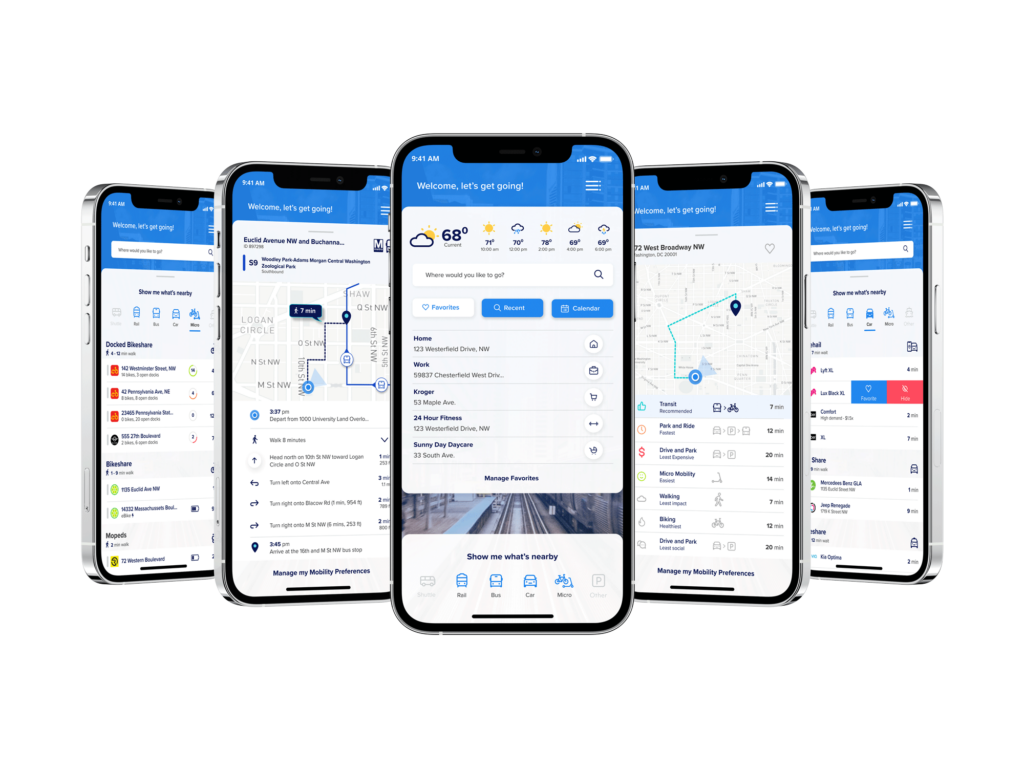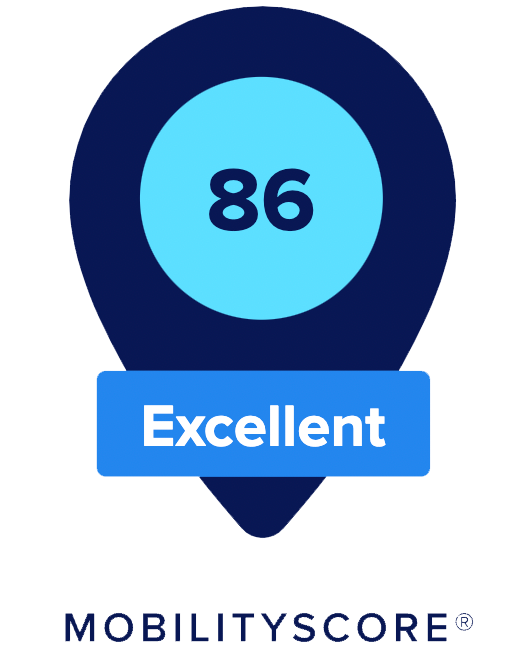Right sizing parking, or simply, determining the correct amount of parking spaces, is a shared challenge across commercial real estate and employers. There are no perfect solutions to determining the exact amount of parking required in a given situation. However, there are many ways to support reductions in parking, and to predict transit and shared mobility use that support right sized parking.

Parking: A Shared Problem
For commercial real estate developers, parking areas typically deliver the lowest returns compared to space used for office or residential. Many seeking LEED certification are interested in having a Reduced Parking Footprint. There may also be parking restrictions set by municipalities and Transportation Demand Management (TDM) requirements.
For employers, parking is never truly free: if it’s not paid for by the employer, it is paid for by the employee, which many now consider an effective cut out of their pay. Local governments have imposed laws on employee-provided parking, such as Washington, D.C.’s Parking Cash-Out Law.
Right Sizing Parking
LEED’s intent in supporting less parking is “to minimize the environmental harms associated with parking facilities, including automobile dependence, land consumption, and rainwater runoff.” Meanwhile, 76% of Americans rely on a car for their commute, which is a factor almost every real estate project and employer faces.
So what’s the right amount of parking? For many, it is trying to have as few parking spaces as possible without it becoming a major detriment. If you’re seeking LEED certification that includes a reduced parking footprint, providing “parking capacity that is a 30% reduction below the base ratios for parking spaces” may seem achievable, a challenge, or perhaps, insurmountable. For employers, a serious reduction of parking could mean changes in remote work policies, or in worst-case scenarios, employee attrition. Alternatively, an employer removing parking could be widely supported by employees, supportive of your workplace sustainability goals, pairs well with an attractive work-from-home schedule, and could encourage healthier commutes.
While nobody can provide a perfect equation for the correct amount of parking, we can provide you with tools that support right sized parking, support a reduction of parking spaces, and predicting parking needs.
Supporting Right Sized Parking
Actionfigure Screen

Actionfigure Screen, originally TransitScreen®, is the gold standard in real time transportation information displays. Screen shows the best choices in transit, shared mobility, and private transportation in one place, helping people get to where they need to go without needing a car or parking. For tenants and employees, having Actionfigure Screen is more than an amenity: it becomes a vital resource for navigating transportation choices, and alternatives to driving and using parking.
With LEED certification, Screen supports having a Reduced Parking Footprint, and has been used to satisfy a LEED point in retail by providing alternative transportation education.
Actionfigure Mobile

Actionfigure Mobile extends the functionality of Screen to your tenants or employees’ pockets. In addition to the features of Screen, Actionfigure Mobile adds the ability to plan trips and to evaluate choices based on criteria such as cost, time, and sustainability. Mobile also includes nearby parking costs where available, helping people see the true financial impacts of transportation choices.
Actionfigure Insights

Actionfigure Insights generates customized trip plans, helping current and prospective tenants and employees see personalized commute choices in a holistic manner. Powered by Actionfigure’s recommendation engine, private and public transportation information, and enhanced commuter benefits education tools, this is a key product in mitigating excess parking demand and supporting LEED goals in right sizing parking. Studies support that one in ten will choose a new commute after presented with choices with sufficient engagement.
MobilityScore®

MobiliyScore® is the definitive metric for transportation access. Using data from Actionfigure’s industry-leading public and private transportation platform, the patented MobilityScore algorithm goes beyond measuring access to nearby mobility options: it evaluates how long it takes to get to them, their schedules, and on-time performance. MobilityScore provides a true understanding of the value of a location as it relates to its transportation choices.
For right sizing parking in particular, MobilityScore provides key metrics for understanding how available transportation modes are, in determining how well people can easily get around without needing parking.




